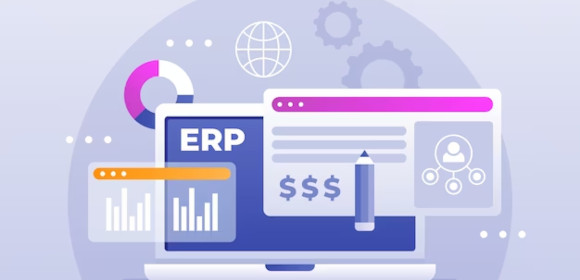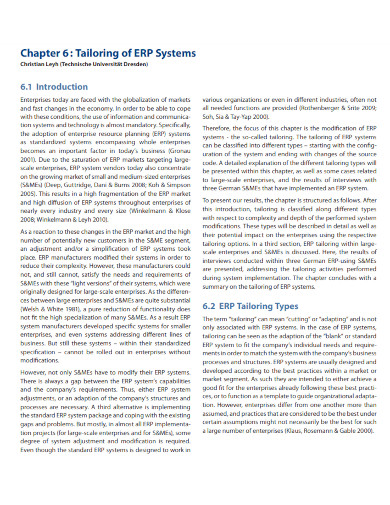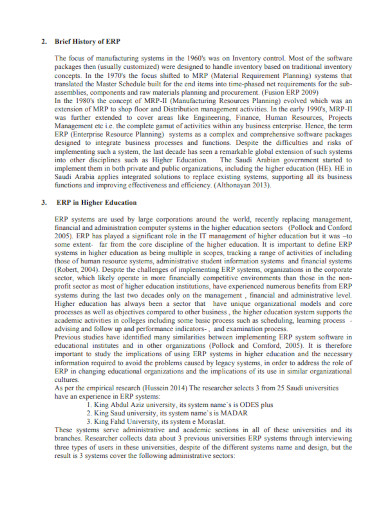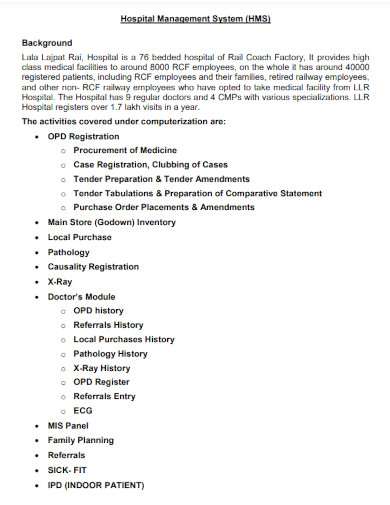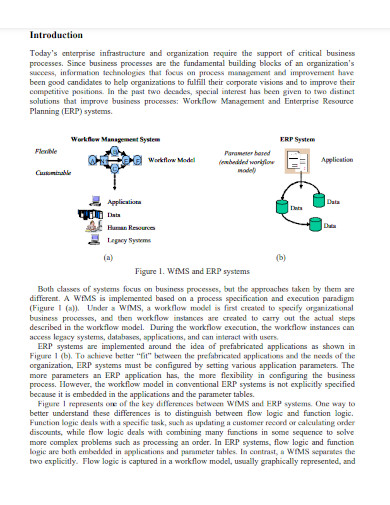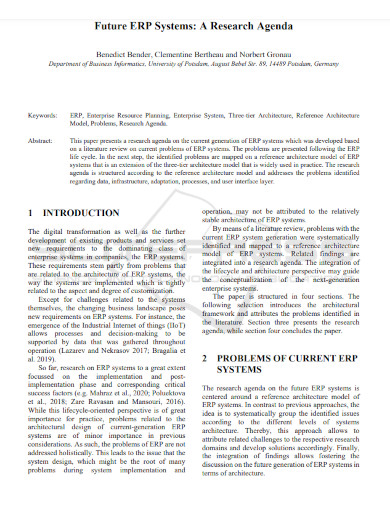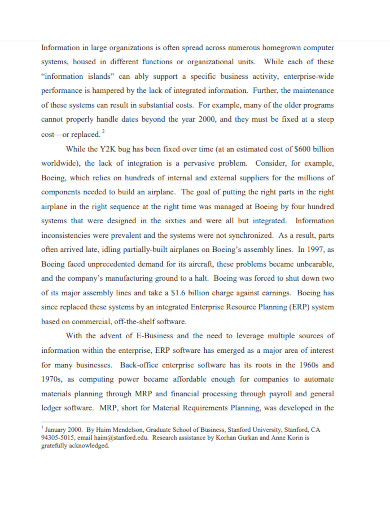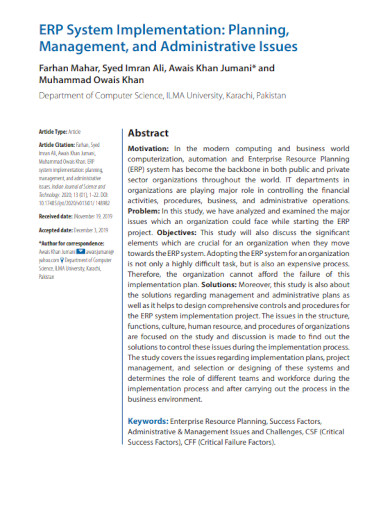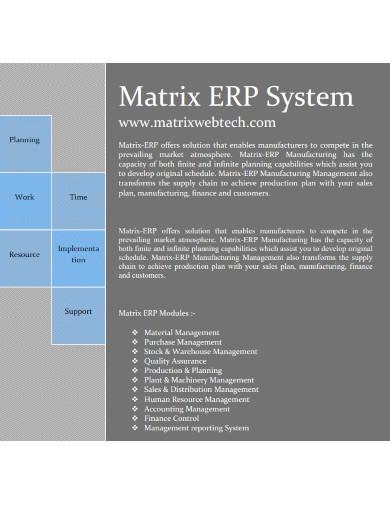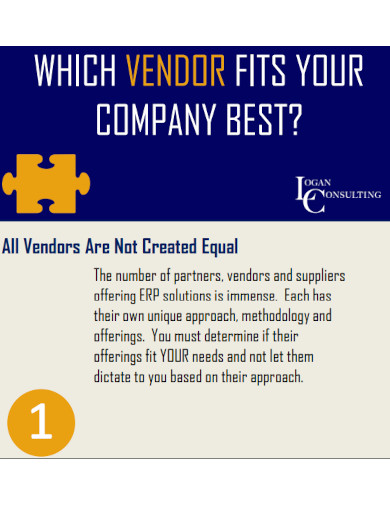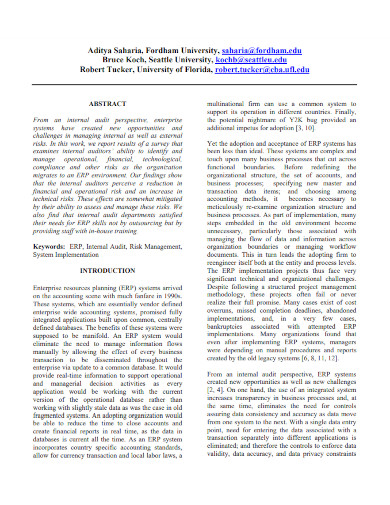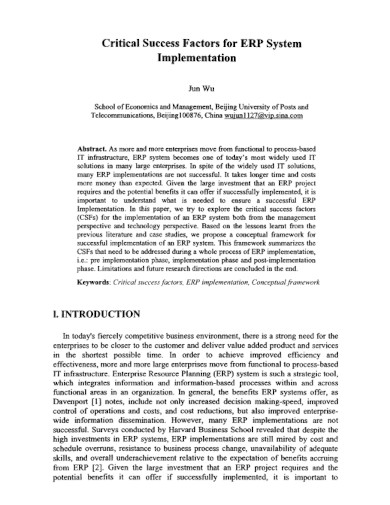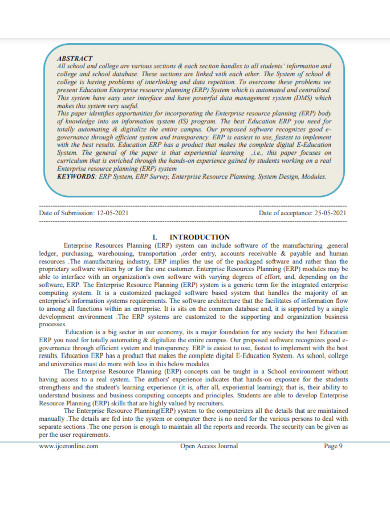11+ ERP System Examples to Download
Enterprise Resource Planning, commonly known as ERP, is a business management software that allows organizations to integrate their monthly operations report and automate various processes. The system helps organizations to manage their resources, such as finances, supply chain, human resources, and customer relations, all in one place. ERP systems have become increasingly popular over the years, as organizations have realized the importance of streamlined operations and the need for a centralized platform. In this article, we will discuss the benefits of ERP systems and how they can help organizations achieve their business information report goals. We will also examples of ERP systems and how to create them.
1. Tailoring of ERP Systems
2. ERP Systems Functionalities in Higher Education
3. RCF ERP System Template
4. Workflow Management Systems and ERP Systems
5. Future ERP Systems Template
6. ERP System Overview
7. ERP System Implementation
8. Matrix ERP System Template
9. Implementing Your New ERP System
10. ERP Systems and Internal Audit
11. Critical Success Factors for ERP System
12. Education ERP System Template
What is an ERP System?
Enterprise Resource Planning (ERP) is a type of business management (see examples of business management SWOT analysis) software that allows organizations to integrate their various business functions and automate their operations. An ERP system can manage a range of business functions, including project finance essentials and accounting, human resources, supply chain management, customer service plan, project management plan, and manufacturing.
The primary goal of an ERP system is to provide a centralized platform that can collect, store, manage, and interpret data from various departments within an organization. This integration of information and automation of processes can improve efficiency, reduce costs, and elaborates the importance of financial accounting in decision-making capabilities.
How to use ERP Systems
Using an ERP system involves several steps, including planning, implementation, training, and maintenance. Here is a general overview of how to use an ERP system:
Step 1: Planning
Before implementing an ERP system, it’s essential to define the business requirements and goals. This includes identifying the specific business processes that the system will manage and the functionalities required.
Step 2: Implementation
Once the planning phase is complete, the ERP system needs to be installed and configured to meet the organization’s specific needs. This involves customizing the software to fit the organization’s workflows and data requirements.
Step 3: Training
Once the ERP system is installed and configured, it’s essential to train employees to use the system effectively. This involves providing training on the system’s functionalities, data entry procedures, and workflows.
Step 4: Maintenance
ERP systems require ongoing maintenance to ensure that they continue to function effectively. This includes performing regular backups, updating the software, and monitoring the system’s performance.
FAQs
What are some examples of ERP systems?
Examples of ERP systems include SAP, Oracle, Microsoft Dynamics, and Infor.
What are the different modules of an ERP system?
ERP systems typically include modules for finance, accounting, HTML, human resources, supply chain management, customer relationship management, and manufacturing.
How is data security managed in an ERP system?
ERP systems typically have robust security measures in place to ensure that data is secure and protected. However, it’s important to select a vendor that meets your organization’s security requirements and standards.
ERP systems can be deployed on-premise, where the software is installed on the organization’s servers, or in the cloud, where the system is hosted by a third-party provider. Some ERP systems are also available as software as a service (SaaS) solutions, which allow organizations to access the system over the internet without the need for local installations.


